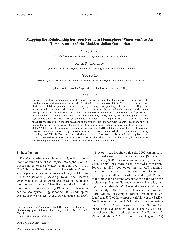摘要
A regression-based modeling approach is described for mapping the dependence of atmospheric state variables such as surface air temperature (SAT) on the Madden-Julian oscillation (MJO). For the special case of a linear model the dependence can be described by two maps corresponding to the amplitude and lag of the mean atmospheric response with respect to the MJO. In this sense the method leads to a more parsimonious description than traditional compositing, which usually results in eight maps, one for each MJO phase. Another advantage of the amplitude and phase maps is that they clearly identify propagating signals, and also regions where the response is strongly amplified or attenuated. A straightforward extension of the linear model is proposed to allow the amplitude and phase of the response to vary with the amplitude of the MJO or indices that define the background state of the atmosphere-ocean system. Application of the approach to global SAT for boreal winter clearly shows the propagation of MJO-related signals in both the tropics and extratropics and an enhanced response over eastern North America and Alaska (further enhanced during La Nina years). The SAT response over Alaska and eastern North America is caused mainly by horizontal advection related to variations in shore-normal surface winds that, in turn, can be traced (via signals in the 500-hPa geopotential height) back to MJO-related disturbances in the tropics.
- 出版日期2011-8
- 单位南京大学
